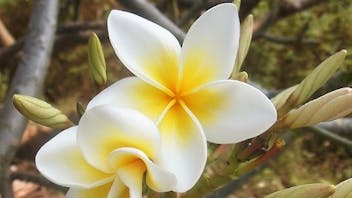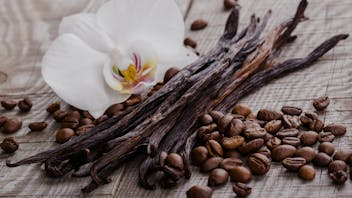Product Overview
Tuberose Absolute has a well-established reputation for use in fine fragrances and perfumery. Our Tuberose Absolute – Fine is the epitome of exquisite with an extremely rich, clean, intensely sweet floral aroma, a refined oily-fatty undertone and a long, soft, sweetly floral drydown. The aroma of this delightful oil invokes an ambiance of sensuality, peace, and positivity. But for perfumers, our Tuberose Absolute – Fine is a specialty oil not to be missed. We highly recommend this one!
The absolute produced from the blossoms of Polianthes tuberosa (Tuberose) has a very complex chemical composition (as is true of other absolutes) and contains alcohols, aromatic esters, traces of indole, eugenol and tuberone (a ketone).[1] Perhaps this is one of the reasons why complex and highly concentrated aromatic oils do not smell as expected, or may seem to have an off-putting aroma, when smelled directly from the container. It is so crucial to evaluate the aroma of aromatic oils from a scent strip where the oil is exposed to air, allowing the aromatic molecules to evaporate, become airborne, and be detected by the nose; then the true nature of the oil – with all its subtle tones and nuances – can be more accurately discerned.
The Pre-Columbian Indians of Mexico first domesticated the Tuberose, native to Central America where wild growing species can be found[2]. It was one of the first plants introduced to Europe from Mexico, and by the late 19th century, notable quantities of Tuberose were under cultivation in Grasse, France, where the absolute of the flowers was extracted by the "enfleurage" method. Besides France, the plants are currently cultivated in Morocco, Egypt and India.[3]
In perfumery, Tuberose is a powerful floral force, illuminating floral, amber, and exotic fragrances, and lending depth and opulence to other white flowers. Sensual, fresh, and heady with a touch of indolic muskiness, Tuberose is sure to enhance your aromatic creations with richly complex sweetness and body.
1 Rhind, Jennifer Peace. Fragrance and Wellbeing, 2014, pp. 299.
2 Arctander, Steffen. Perfume and Flavor Materials of Natural Origin, 1960, p. 630.
3 Rhind, Jennifer Peace. Fragrance and Wellbeing, 2014, pp. 299.



